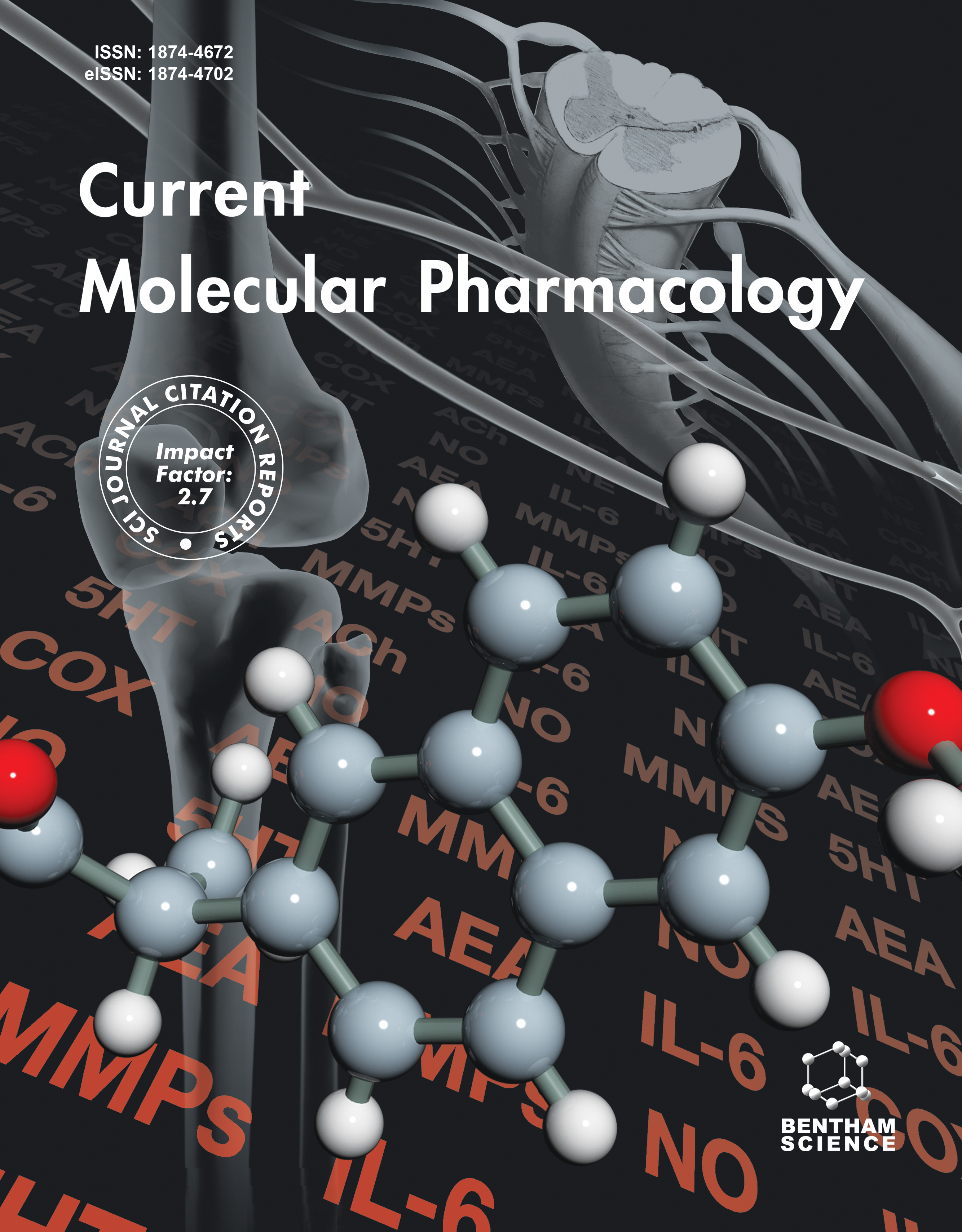- Home
- A-Z Publications
- Current Molecular Pharmacology
- Previous Issues
- Volume 6, Issue 2, 2013
Current Molecular Pharmacology - Volume 6, Issue 2, 2013
Volume 6, Issue 2, 2013
-
-
SLC1 Glutamate Transporters and Diseases: Psychiatric Diseases and Pathological Pain
More LessAuthors: Takayuki Nakagawa and Shuji KanekoThe solute carrier family 1 (SLC1) consists of two neutral amino acid transporters and five high-affinity excitatory amino acid transporters (EAAT1-5). EAATs are expressed in glial cells (EAAT1/GLAST and EAAT2/GLT-1), neurons (EAAT3/EAAC1 and EAAT4), and the retina (EAAT5), where they precisely regulate extracellular glutamate levels at both synaptic and extrasynaptic sites. EAATs play essential roles in the maintenance Read More
-
-
-
Type 1 Sodium-Dependent Phosphate Transporter acts as a Membrane Potential-Driven Urate Exporter
More LessAuthors: Takaaki Miyaji, Tatsuya Kawasaki, Natsuko Togawa, Hiroshi Omote and Yoshinori MoriyamaSLC17A1 protein (NPT1) was the first identified member of the SLC17 phosphate transporter family, and is known to mediate Na+/inorganic phosphate (Pi) co-transport when expressed in Xenopus oocytes. Although this protein was suggested to be a renal polyspecific anion exporter, its transport properties were not well characterized. The clean biochemical approach revealed that proteoliposomes comprising purified N Read More
-
-
-
Bile Salt Export Pump (BSEP/ABCB11): Trafficking and Sorting Disturbances
More LessAuthors: Hisamitsu Hayashi and Yuichi SugiyamaBile salt export pump (BSEP/ABCB11), a member of the family of ATP-binding cassette transporters, is localized on the canalicular membrane of hepatocytes and mediates the efficient biliary excretion of bile acid. The secretion of bile acid into bile by BSEP provides the primary osmotic driving force for bile flow generation. Intrahepatic cholestasis resulting from dysfunction of BSEP can be caused by a mutation in the ge Read More
-
-
-
The Bioanalytical Molecular Pharmacology of the N-methyl-D-Aspartate (NMDA) Receptor Nexus and the Oxygen-Responsive Transcription Factor HIF-1α : Putative Mechanisms and Regulatory Pathways Unravel the Intimate Hypoxia Connection
More LessHypoxia-mediated regulation of N-methyl-D-aspartate (NMDA) receptor (NMDAR) is phenomenal. NMDAR is no doubt an intriguing paradoxical glutamate receptor (GluR) with versatile actions. GluRs play a pivotal role in brain physiology and pathophysiology under ischemia and oxygen deprivation, where NMDARs are major contributors. Activation of NMDARs is closely associated with the kinetics of intracellular calcium ( Read More
-
Most Read This Month
Article
content/journals/cmp
Journal
10
5
false
en


